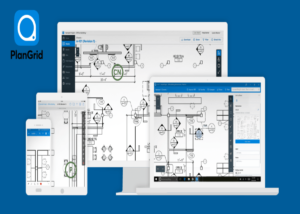PlanGrid, a construction productivity software within the Autodesk Construction Cloud ecosystem, has revolutionized the way onsite construction workers manage projects. With over 1 million projects worldwide, PlanGrid’s intuitive interface and real-time data capabilities enable commercial and heavy civil industries to collaborate effectively from any location. This article delves into how PlanGrid streamlines workflows, enhances project visibility, integrates with other Autodesk tools, and impacts various stakeholders in the construction industry.
Table of Contents
Key Takeaways
- PlanGrid’s real-time collaboration and document management tools significantly streamline construction workflows, enhancing productivity on-site.
- The software’s real-time data, including progress photos and updates, empowers data-driven decision-making and improves project visibility.
- Integration with Autodesk Construction Cloud facilitates seamless data transfer and unified project management, optimizing project outcomes.
- While PlanGrid’s pricing is available upon request, its adoption offers a promising return on investment when evaluating its comprehensive features against alternative solutions.
- General contractors, subcontractors, architects, engineers, and owners all benefit from PlanGrid’s features, which tailor to the diverse needs of construction industry stakeholders.
Streamlining Construction Workflows with PlanGrid

Real-Time Collaboration and Communication
In the fast-paced environment of construction, real-time collaboration is not just a convenience; it’s a necessity. PlanGrid provides a platform where project stakeholders can communicate seamlessly, ensuring that everyone is on the same page. This synchronization of information reduces errors and streamlines workflows, leading to improved project outcomes.
Real-time communication facilitated by PlanGrid allows for instant sharing of updates, markups of blueprints, and other critical documents. The immediacy of this exchange means that decisions can be made quickly and efficiently, with all parties having access to the latest data.
PlanGrid’s ability to enhance project visibility and control is pivotal in driving informed decision-making and operational efficiency.
The following list highlights the core benefits of PlanGrid’s collaboration features:
- Ensures all team members have access to the latest information
- Reduces miscommunication and enhances decision-making
- Streamlines the transfer of real-time data between teams
By integrating PlanGrid within the Autodesk Construction Cloud™, companies like MAREK have experienced a significant improvement in jobsite communication, as highlighted in a customer story.
Document Management and Version Control
In the fast-paced world of construction, managing documents efficiently is critical. PlanGrid’s document management system ensures that all project stakeholders have access to the latest revisions, reducing the risk of costly errors and rework. With version control, teams can track changes over time, ensuring that everyone is working from the most current set of documents.
- Centralized storage for all project documents
- Real-time access to the latest revisions
- Easy tracking of document history and changes
PlanGrid’s robust version control capabilities provide a clear audit trail of document updates, which is essential for maintaining project integrity and compliance.
By leveraging PlanGrid’s document management features, construction teams can streamline their workflows, allowing for more time to be spent on the actual construction rather than on paperwork. The integration with Autodesk Docs further enhances this process, creating a seamless environment for document control.
Field Data Collection and Issue Tracking
PlanGrid revolutionizes field data collection and issue tracking by providing a centralized platform for construction teams to capture, manage, and analyze data in real time. Efficient data capture on the jobsite allows for immediate action on issues, ensuring that they are addressed promptly and effectively.
- Capture site observations with ease
- Log safety incidents as they occur
- Track work progress against project milestones
By streamlining the data collection process, PlanGrid enables teams to focus on the work at hand rather than the paperwork.
The integration of PlanGrid within the Autodesk Construction Cloud ecosystem, as highlighted in the title ‘Autodesk Construction Cloud – Apps on Google Play’, ensures that data flows seamlessly between applications, enhancing collaboration and decision-making. This connectivity is crucial for maintaining a single source of truth across all project stages, from design to completion.
Enhancing Project Visibility with PlanGrid’s Real-Time Data

Progress Monitoring Through Photos and Updates
The integration of 3D color-coded visualizations has revolutionized the way construction teams monitor project progress. By introducing model-based progress tracking, PlanGrid enables a more intuitive and comprehensive view of the construction site. This approach not only simplifies the identification of discrepancies between the planned and actual construction but also facilitates real-time updates that keep all stakeholders informed.
With PlanGrid, catching mistakes early becomes a more manageable task. The platform’s ability to highlight potential issues before they escalate can save time and resources. For instance, Kaitlyn Robinson from United Group of Companies notes the significance of AI in aiding the punch process and emphasizes the need for technology that can preemptively identify common mistakes.
PlanGrid’s real-time data capabilities ensure that project managers have a constant pulse on the site’s activities, allowing for swift interventions and adjustments where necessary.
The following table illustrates the benefits of using PlanGrid for progress monitoring:
| Feature | Benefit |
|---|---|
| Real-Time Photo Updates | Enhance communication and documentation |
| Version Control | Prevent data discrepancies |
| Issue Tracking | Improve quality control |
By leveraging PlanGrid’s advanced features, construction teams can maintain a high level of precision and efficiency throughout the project lifecycle.
Data-Driven Decision Making
In the realm of construction, the ability to make informed decisions swiftly is crucial for the success of any project. With real-time data at their fingertips, construction professionals can pivot and adapt to changes with confidence. By harnessing the power of construction ERP software, teams gain valuable insights into project performance, financial metrics, and resource utilization. This empowers them to identify areas for improvement, mitigate risks, and optimize operations.
The integration of analytics capabilities within construction software platforms is not just about having access to data—it’s about transforming that data into actionable intelligence.
Construction projects benefit from project management software like BuilderTREND, offering resource allocation, scheduling, and mobile access. The user-friendly interface and robust features support effective task organization and project success. This ensures that every stakeholder is equipped with the knowledge to make strategic decisions that align with the project’s objectives and timelines.
Customizable Reports and Dashboards
PlanGrid’s customizable reports and dashboards are pivotal for construction teams to monitor, analyze, and communicate project performance effectively. The flexibility to tailor reports to specific project needs ensures that stakeholders can focus on the most relevant data points. With PlanGrid, creating personalized dashboards is straightforward, allowing for the aggregation of critical metrics into a single, accessible view.
The ability to customize and share reports in real-time fosters a culture of transparency and continuous improvement within project teams.
Key features of PlanGrid’s reporting and dashboard capabilities include:
- Easy-to-use report templates
- Real-time data visualization
- Automated report generation
- Secure sharing options
These features empower teams to make data-driven decisions and maintain a clear overview of project status at any given time. As projects evolve, so can the dashboards, which adapt to the changing requirements and complexities of construction projects.
Integrating PlanGrid within the Autodesk Construction Cloud Ecosystem

Seamless Data Transfer with Design and Modeling Tools
PlanGrid’s integration within the Autodesk Construction Cloud ecosystem facilitates seamless data transfer between design and modeling tools, ensuring that construction teams have access to the most up-to-date project information. This interoperability is crucial for maintaining consistency and accuracy across all stages of the construction process.
- Collaborate with designers by creating parametric models that meet project requirements.
- Ensure compliance with industry standards through powerful Building Information Modeling (BIM) content creation.
- Streamline product documentation to efficiently generate necessary outputs.
By enabling real-time validation of design plans and sharing accurate manufacturing information, PlanGrid reduces project risk and prevents costly errors.
The integration also supports template discovery and customization, allowing teams to incorporate manufacturing-level detail into design files with confidence. This level of detail and precision in the planning phase paves the way for industrialized construction practices that are quicker, of higher quality, and generate less waste.
Unified Project Management Across Platforms
The integration of PlanGrid within the Autodesk Construction Cloud ecosystem marks a significant advancement in the realm of project management. Unified project management across platforms ensures that all stakeholders have access to the same information, fostering a collaborative environment that is both efficient and transparent. This integration allows for a seamless flow of data between PlanGrid and other Autodesk tools, which is crucial for maintaining consistency and accuracy throughout the project lifecycle.
By centralizing project data and workflows, construction teams can minimize the risk of data silos and ensure that decision-making is based on the most current and comprehensive information available.
The ability to manage construction RFIs in a single platform with Autodesk Construction Cloud connects RFIs to all tasks, including submittals, enhancing the overall project management process. This connectivity not only simplifies the workflow but also provides a clear audit trail for all project-related activities.
Leveraging Analytics for Improved Project Performance
In the realm of construction management, analytics play a pivotal role in enhancing project performance. PlanGrid’s analytics capabilities enable a data-driven approach, ensuring that decisions are based on accurate and timely information. This not only streamlines project workflows but also significantly reduces errors and improves outcomes.
By harnessing the power of analytics, construction teams can predict trends, identify potential issues before they escalate, and optimize resource allocation.
The integration of analytics within PlanGrid allows for a comprehensive overview of project metrics, which can be broken down into the following categories:
- Project timelines and milestones
- Budget tracking and cost management
- Quality control metrics
- Safety incident reports
Understanding and controlling data access is crucial for the effectiveness of analytics tools. As industry experts suggest, the data utilized by AI and analytics must be trusted and accurate to gain the confidence of the team relying on these insights for decision-making.
Navigating the Cost-Benefit Analysis of PlanGrid Adoption

Understanding PlanGrid Pricing Structures
PlanGrid’s pricing model is tailored to meet the diverse needs of construction projects of varying sizes and complexities. Pricing is available upon request, reflecting the customizable nature of the service offerings. Prospective users should consider the scale of their operations and the specific features they require when inquiring about costs.
PlanGrid offers a suite of construction management solutions, which can be a significant investment for small and medium-sized businesses. It is crucial to weigh the potential benefits against the financial commitment. The software’s intuitive interface and compatibility with various devices make it a valuable tool for enhancing productivity on-site.
While PlanGrid may present an upfront cost, the long-term efficiency gains and data-driven insights can lead to substantial cost savings over the lifecycle of a construction project.
For a detailed understanding, businesses are encouraged to contact PlanGrid directly to discuss their specific needs and receive a tailored pricing proposal. This approach ensures that companies only pay for the features that are essential to their project’s success.
Evaluating Return on Investment for Construction Software
When considering the adoption of construction software like PlanGrid, it’s crucial to conduct a thorough return on investment (ROI) analysis. This involves not only looking at the initial costs but also the long-term benefits that can be realized through enhanced efficiency and productivity. Organizations can streamline processes and improve project outcomes, which often leads to increased productivity, reduced costs, and a competitive advantage.
Functionality, customization, and integration with existing systems are key factors that influence the ROI of construction software. The ability to access project data remotely through mobile apps is particularly critical in today’s fast-paced construction environment. Reliable customer support and training resources are also vital components that contribute to the overall value derived from the software.
By carefully evaluating the most suitable construction software, firms can make informed decisions that align with their specific needs, ensuring a positive transformation in how projects are managed and executed.
Here is a simplified ROI calculation framework for construction software:
| Cost Type | Initial Investment | Recurring Costs | Expected Benefits |
|---|---|---|---|
| Software Purchase | $X | $Y/year | Increased efficiency |
| Training | $Z | – | Improved project management |
| Integration | $W | – | Enhanced collaboration |
The table above outlines the basic structure of an ROI analysis, which should be further detailed with specific figures and projected outcomes for a comprehensive evaluation.
Comparing PlanGrid with Alternative Solutions
When considering PlanGrid as a construction management tool, it’s essential to weigh its features and costs against other software in the market. PlanGrid’s real-time collaboration and document management capabilities are robust, but potential users should be aware of its limitations and pricing, which may be prohibitive for smaller firms.
Comparing PlanGrid with alternative solutions involves looking at key features, pros, and limitations, as well as user experiences. For instance, while PlanGrid offers a suite of tools including version control and issue tracking, some users may find its interface less intuitive than competitors’.
Pricing is a critical factor in the decision-making process, and PlanGrid’s cost structure is available upon request, making it necessary for interested parties to reach out directly for detailed information.
Here is a brief comparison of PlanGrid with other top construction management software:
- Top Tools: PlanGrid, BIM 360, BuildingConnected
- Common Features: Project management, document management, design coordination
- Unique PlanGrid Features: Field markups, progress photos
- Pricing: Available upon request; may be costly for small to medium-sized businesses
Ultimately, the choice of construction management software should align with the specific needs and budget of the construction team.
PlanGrid’s Impact on Different Construction Industry Stakeholders

Benefits for General and Subcontractors
General and subcontractors experience a significant boost in efficiency and project control when adopting PlanGrid. Improved project management is a cornerstone benefit, with real-time access to project data and resources. This enables a more agile response to the dynamic nature of construction projects, ensuring that both general and subcontractors can adapt quickly to changes and updates.
Streamlined communication and collaboration among team members is facilitated by PlanGrid’s centralized platform. This reduces the risk of miscommunication and errors, leading to a more cohesive project execution. The ability to share updates, documents, and feedback instantaneously means that everyone is on the same page, minimizing delays and rework.
- Enhanced document control and access
- Real-time collaboration tools
- Efficient resource allocation
PlanGrid’s platform not only simplifies the management of day-to-day operations but also empowers teams with the tools necessary for long-term strategic planning and execution. The integration of PlanGrid within the broader construction ecosystem is a testament to its value in shaping the world of tomorrow.
Streamlining Design Processes for Architects and Engineers
Architects and engineers are constantly seeking ways to enhance efficiency and precision in their design processes. PlanGrid offers a suite of tools that streamline architectural and engineering workflows, enabling professionals to focus on innovation rather than administrative tasks. Seamless collaboration is at the forefront, allowing for real-time updates and ensuring that all team members are working with the most current information.
- Seamless collaboration
- Powerful Building Information Modeling (BIM) content creation
- Streamlined product documentation
By integrating PlanGrid, architects and engineers can leverage AutoCad Architecture to improve field communication and automate hyperlinking, facilitating easy navigation of project documents. This integration ensures that only compliant versions of models are used, which is crucial for maintaining project standards and industry compliance.
PlanGrid’s tools are designed to bring workflows to reality, empowering architects to design with certainty and validate their plans in real-time. Product managers and engineers can share accurate manufacturing information, leading to quicker project completion, higher quality, and less waste.
Understanding the impact of PlanGrid on design workflows is essential for architects and engineers. It not only aids in creating parametric models and defining BIM content but also simplifies the generation of product documentation at scale. As the industry moves towards industrialized construction, PlanGrid’s role in transforming the AECO industry becomes increasingly significant.
Enhancing Project Delivery for Owners
Owners who adopt PlanGrid within their construction projects gain a significant edge in overseeing project delivery. The platform’s real-time data capabilities ensure that owners have immediate access to the latest project information, enabling them to make informed decisions swiftly. Timely insights into project progress and potential issues allow for proactive management and course corrections, which are crucial for maintaining project timelines and budgets.
Flexibility in customization and integration with existing systems is a key benefit of PlanGrid, allowing owners to tailor the software to their specific needs. This adaptability ensures that the transition to using PlanGrid is smooth and that the software complements, rather than disrupts, established workflows.
By leveraging PlanGrid’s comprehensive features, owners can expect not only to enhance the efficiency of their project delivery but also to foster a culture of transparency and accountability within their teams.
The following table illustrates the potential improvements in project delivery metrics after implementing PlanGrid:
| Metric | Before PlanGrid | After PlanGrid |
|---|---|---|
| Time to Resolve Issues | 7 days | 3 days |
| Document Retrieval Time | 30 minutes | 5 minutes |
| Communication Response Time | 24 hours | 2 hours |
Choosing the right construction software, like PlanGrid, is a strategic decision that can lead to increased productivity, reduced costs, and a competitive advantage. It is a move that aligns with the industry’s forward momentum, as seen with the anticipated enhancements in platforms like Procore in 2024.
Conclusion
In the dynamic and demanding field of construction, PlanGrid has emerged as a transformative force, equipping teams with the tools necessary for real-time data access and collaboration. Its intuitive interface and suite of features have been adopted in over a million projects globally, demonstrating its effectiveness in enhancing productivity and project management. While it may present certain limitations and cost considerations for smaller businesses, the benefits of streamlined communication, document management, and integration with Autodesk’s comprehensive construction solutions are undeniable. As the industry continues to evolve, PlanGrid’s role in empowering construction professionals with data-backed insights and fostering trust through collaboration will undoubtedly remain pivotal.
Frequently Asked Questions
What is PlanGrid and who is it designed for?
PlanGrid is a construction productivity software that digitizes blueprints and offers features like version control, collaboration tools, field markups, progress photos, and issue tracking. It’s designed for onsite construction workers in commercial, heavy civil, and other industries.
How does PlanGrid facilitate real-time collaboration in construction projects?
PlanGrid enables real-time collaboration and communication by allowing construction teams to access and share critical project information, including plans, files, and photos, from anywhere. This ensures that everyone is working with the most up-to-date data.
What are the notable features of PlanGrid?
Notable features of PlanGrid include document management, version control, field data collection, issue tracking, customizable reports, and integration with other Autodesk Construction Cloud products like BIM 360 and BuildingConnected.
How does PlanGrid integrate with the Autodesk Construction Cloud ecosystem?
PlanGrid integrates seamlessly within the Autodesk Construction Cloud ecosystem, offering tools for project management, design coordination, and bid management. It allows for smooth data transfer with Autodesk’s design and modeling software.
What are the benefits of using PlanGrid for different construction industry stakeholders?
PlanGrid benefits various stakeholders by streamlining workflows for general and subcontractors, simplifying design processes for architects and engineers, and enhancing project delivery for owners, thus fostering trust and collaboration among teams.
What should potential users consider before adopting PlanGrid?
Potential users should consider PlanGrid’s pricing structure, evaluate the return on investment for their specific needs, and compare its features and functionality with alternative construction software solutions to determine the best fit for their projects.






Pingback: PlanGrid Competitors: The Battle of Construction Tech Giants
Pingback: Jonas Construction Software: Innovating for Industry Success
Pingback: Connecting the Dots in Construction: An In-Depth Look at Trimble Connect